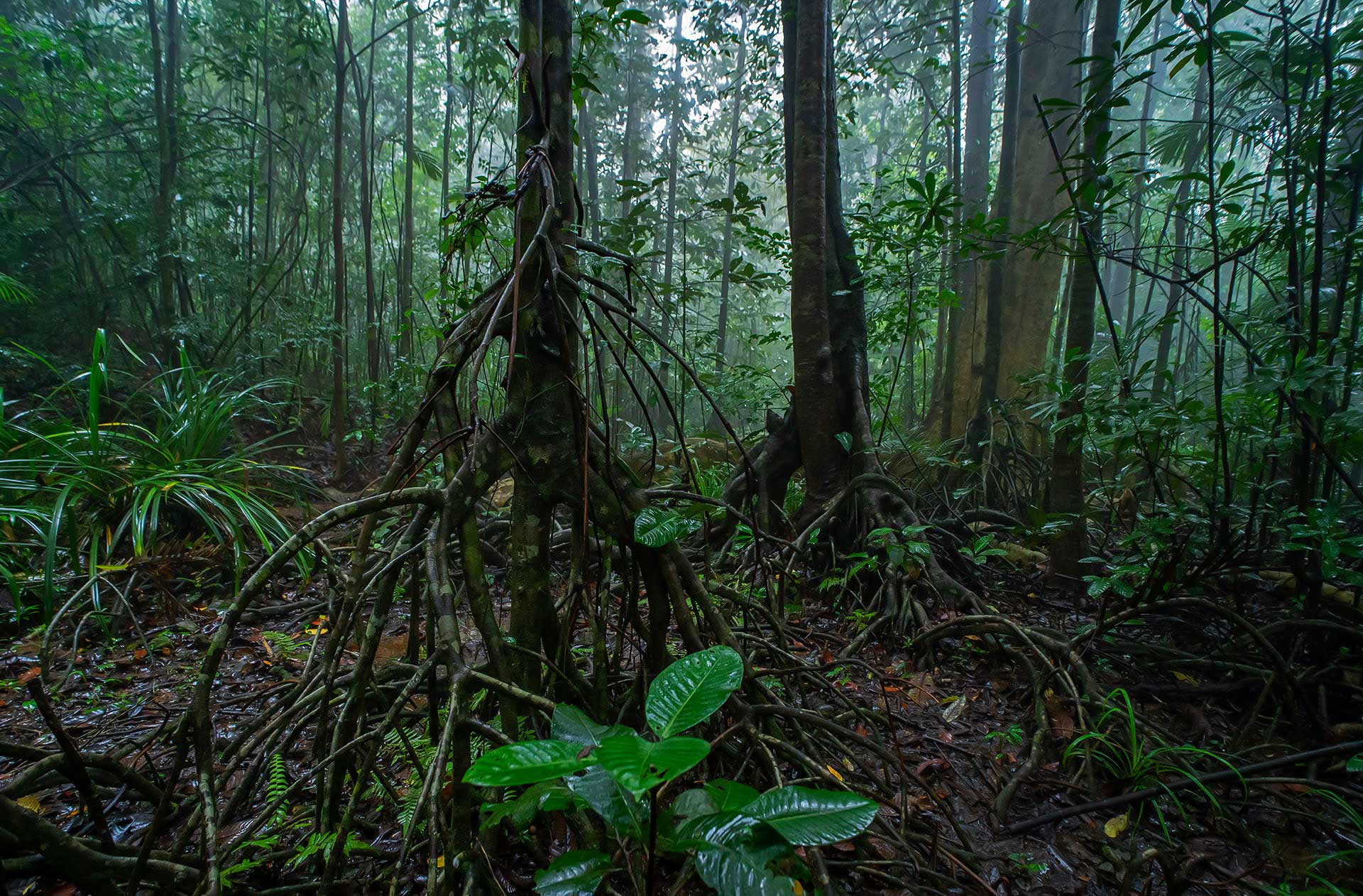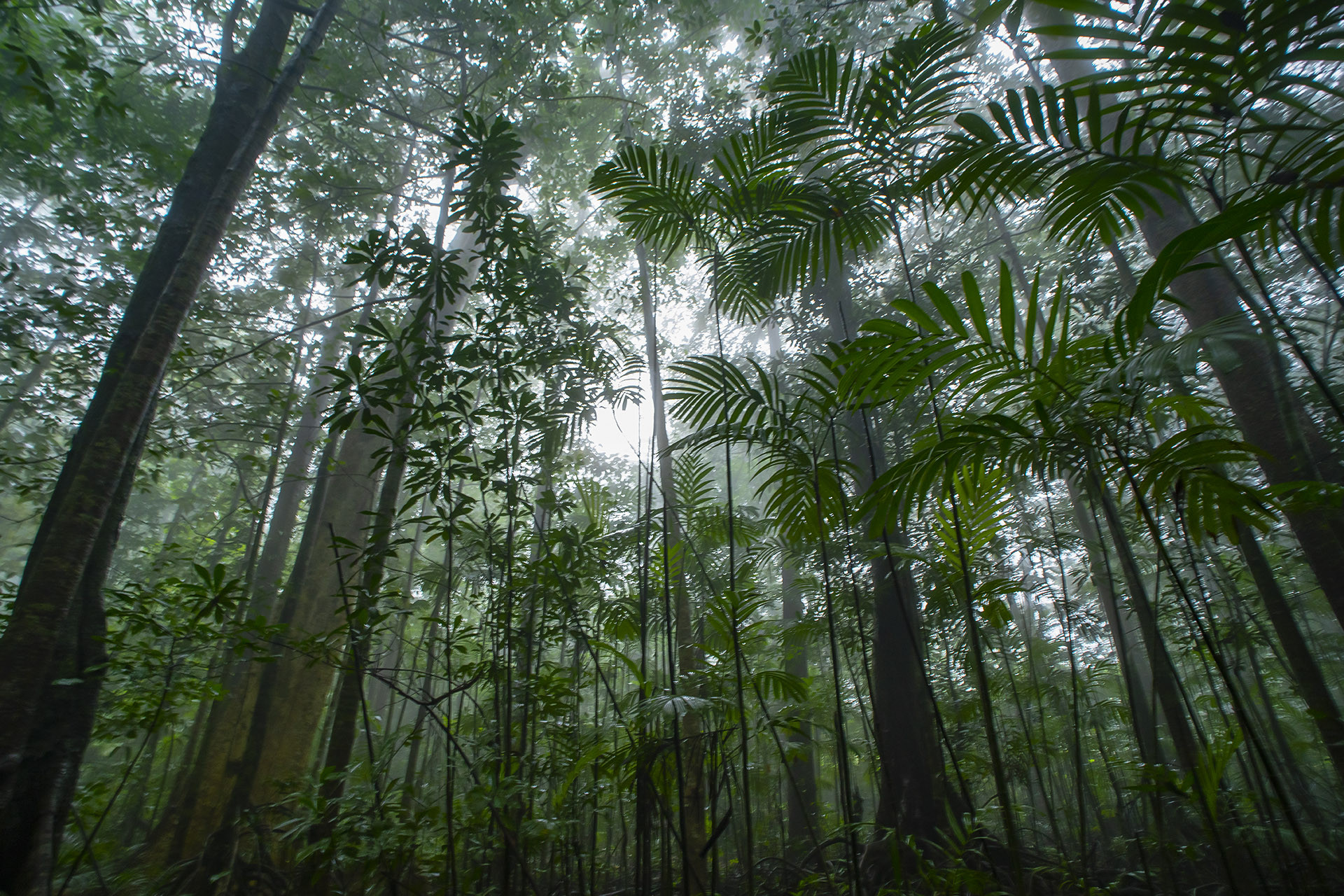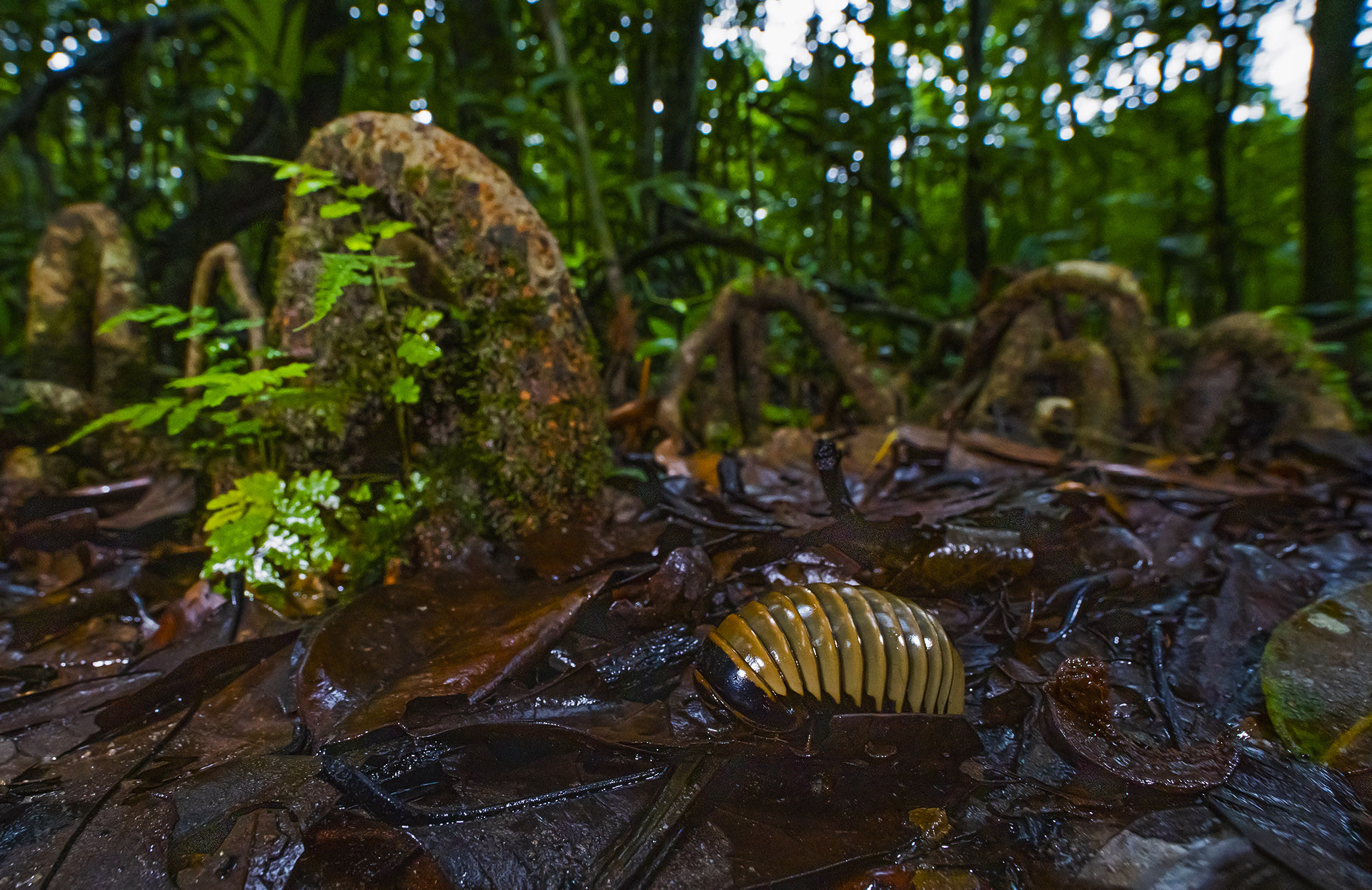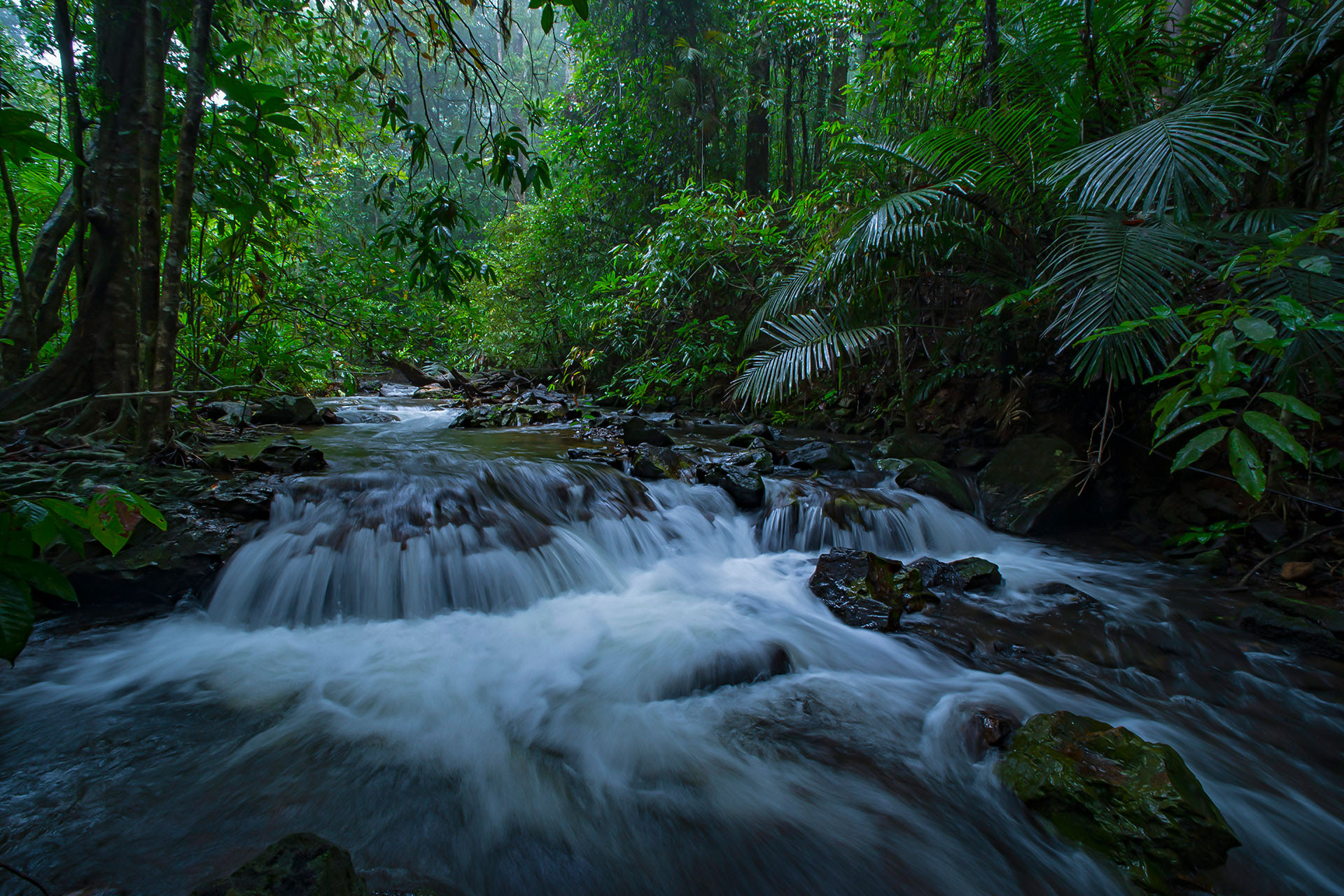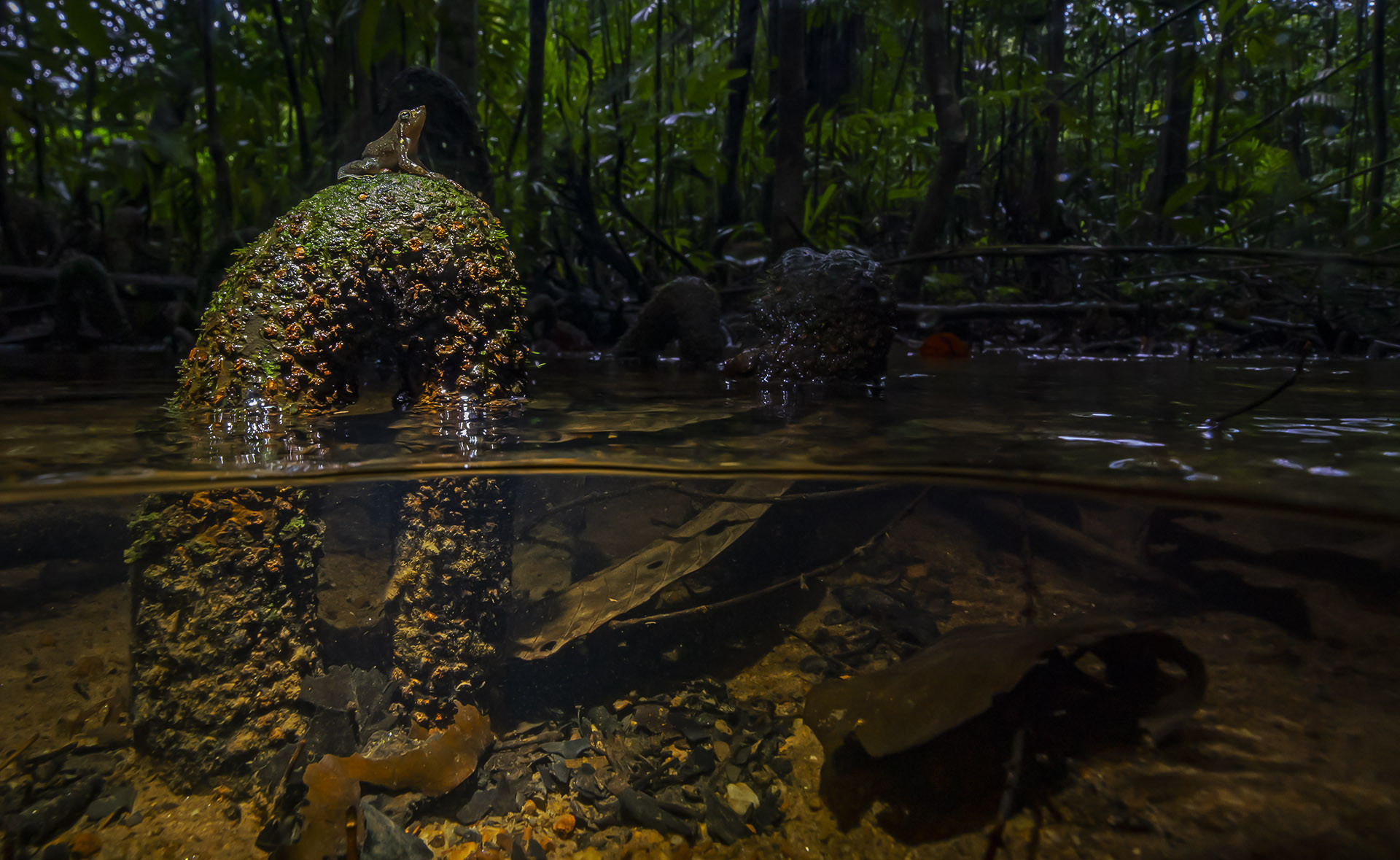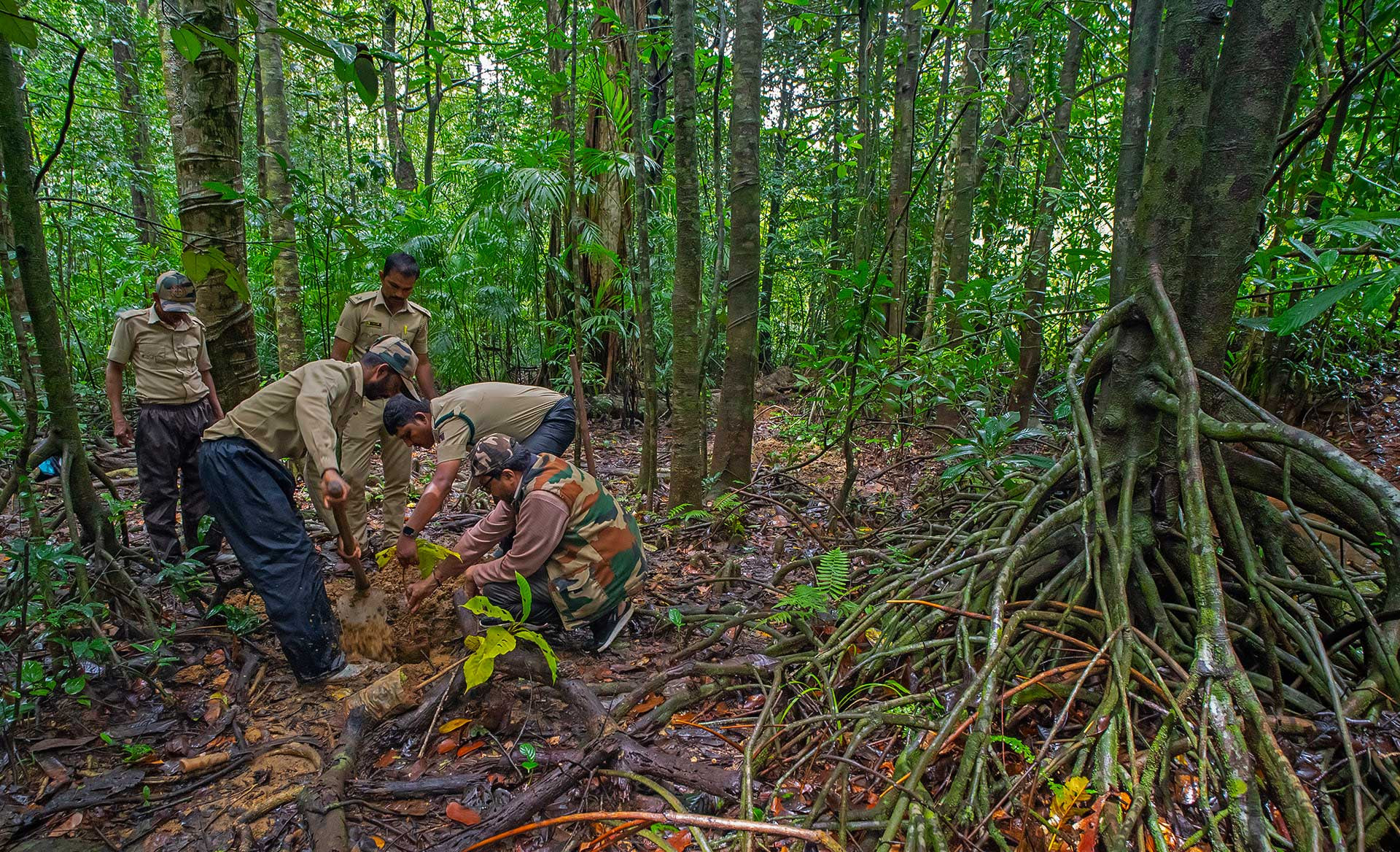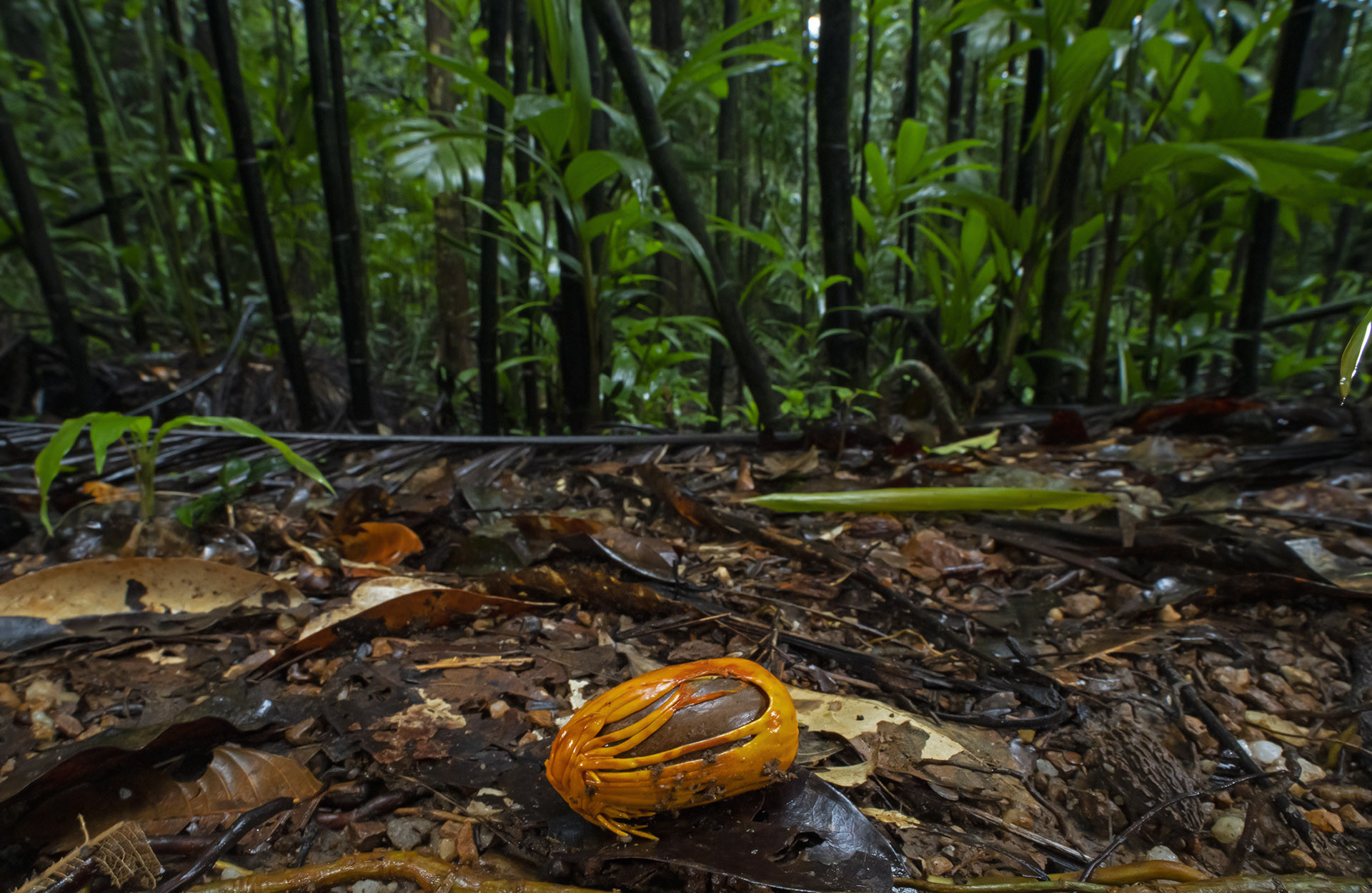This is the fourth story in a series of articles on the Western Ghats—covering everything from elusive frogs to majestic birds to hidden ancient forests.
“Due to increased human pressure, these [swamps] now exist as small, isolated pockets and are one of the most threatened ecosystems in India.” A new paper published in the international journal, Wetlands Ecology and Management, collated and studied 126 research papers on Myristica swamps that have been published in India so far (as of February 2021). Apart from highlighting the ecological importance of the Myristica swamps, the main takeaway of the paper was the immediate need for conservation initiatives to save the last few remaining swamps in the Western Ghats.
But what are Myristica swamps? They are tree-covered wetlands found in small pockets within the evergreen forests of the Western Ghats, in the Andaman and Nicobar Islands, and in Meghalaya. The Myristica swamp forests of the Western Ghats, in particular, are considered one of the most unique and primaeval ecosystems in the world today. These freshwater swamps, predominantly composed of tree species from the ancient family Myristicaceae, once formed a vast hydrological network along the Western Ghats. One of the species from the family, Myristica fragrans, a native of New Guinea and cultivated globally, is what the world knows as nutmeg. The Myristicaceae species of these swamps have stilt and knee roots that help them stay erect in the water-logged soil and are similar to the aerial roots of mangroves in facilitating gas exchange.
Priya Ranganathan, one of the authors of the paper and a PhD student at the Ashoka Trust for Research in Ecology and the Environment (ATREE), Bangalore, refers to Myristica swamps as 'relics of the past'. “These are systems that tell us about the climate from back when the Western Ghats were being formed and of the plant species that existed even before the breakup of India from Madagascar,” says Ranganathan. “As a geologist, I find it fascinating that palaeoclimatology and palaeobotany come together in this one system which is only found in pockets of the Western Ghats today."
In Truth, Older Than Dinosaurs
'Ancient forests' and 'relics of the past' are adages often used to describe these swamps. M D Subash Chandran, a professor at the Centre for Ecological Sciences, Indian Institute of Science (IISc), Bangalore, was the first to dub Myristica swamps as 'relic forests'. But what does he mean by that? To understand, we need to travel back millions of years.
Think back to the continental drift—Gondwanaland (the southern half of the Pangaean supercontinent) started cracking some 130-140 million years ago as Africa separated from South America. But even when all the fragments of Gondwanaland were together, flowering plants had already evolved. Some of the earliest flowering plants were the Magnoliid and Amborella (only one species remains today) clades. But the continental drift meant that the Magnoliids underwent speciation in different landmasses. “The Myristicaceae family of the Magnoliid clade, for example, is found in New Guinea in the Pacific, in the Southeast Asian forests of Malaysia and Indonesia, and the Western Ghats and the Northeast in India," Prof Chandran says. Similarly, Madagascar, which broke away from India, has plants closely related to the Myristicaceae family. In the Amazon belt in South America, one can find swamp forests where Myristicaceae family members are present. "But if you were to cut through the bark of a Myristicaceae species from anywhere on the planet, it will start leaking a pinkish-red resinous sap, revealing a brotherhood retained through millennia," explains the professor.
Fast forward to around 65 million years ago, the meteorite crash in Mexico and the Deccan volcanic eruption saw more than 50 per cent of the biodiversity on the planet perish and the subsequent extinction of dinosaurs. "The Deccan volcanism, perhaps the largest recorded volcanic eruption, saw the regions of Maharashtra, Deccan, and the Western Ghats covered in hundreds and hundreds of feet of lava,” says Prof Chandran. “But the southern Western Ghats survived—the Myristica swamp forests survived. Similarly, the swamp forests in the Congo Basin in Africa and the Amazon Valley in South America survived."
All through the Ice Age and the subsequent warming, and even when the end of the Indus Valley civilisation saw agricultural communities move into the Western Ghats and reshape much of the landscape, the Myristica swamp forests survived. "Through all this—millions of years—the Myristica swamp forests persisted in the valley bottoms of the Western Ghats! That is why I refer to them as relic forests or as a live museum of relic species," explains Prof Chandran.
Myristica, a Living Museum
Research tells us that the Myristica swamps in the Western Ghats host a plethora of floral species with at least 79 tree species (of which 23 are endemic), 26 shrubs, 27 climbers, and 44 herbs, and likely more are yet to be discovered. The most comprehensive study of faunal diversity of Myristica swamps in the southern Western Ghats recorded over 630 species, ranging from flatworms to large mammals, including 14 fish species and 56 amphibian species.
Over the years, several new species of flora and fauna have been discovered from these swamps. The discovery of amphibian species, in particular, is a common trend, says Ranganathan. "Amphibians are sensitive to even the smallest of changes, and the fact that new species are constantly being unearthed is a sign of a pristine ecosystem,” she explains. Prof Chandran recalls a survey of the 2.25sq.km. swamp forest in Kathlekan, in the Sharavathi-Aghanashini basin in Karnataka. “We encountered 35 amphibian species—the entire state of Maharashtra does not have more than 40 species of amphibians,” says the professor. “Myristica swamps are holding onto that biological diversity that the Western Ghats is actually known for!" adds Ranganathan.
Home to Frogs That Can Dance
Yep, you read that right. The Western Ghats is home to 24 species of dancing frogs. One of its larger members, the Kottigehar Dancing Frog (Micrixalus kottigeharensis), is found near perennial, primary streams within semi-evergreen and evergreen forest patches and in the Myristica swamps of the Western Ghats. The species is one of the ‘Top 100 EDGE (Evolutionarily Distinct and Globally Endangered) Amphibians’ on the planet. Under the EDGE fellowship, researcher Madhushri Mudke has been studying the species since 2019.
But why are they called dancing frogs? Like their name suggests, the male frogs can quite literally shake a leg. What scientists call ‘foot-flagging’ involves the rhythmic stretching of their long hind legs to flash their slender, white-webbed toes to attract potential mates. "There are only a few frogs in the world that we know of that exhibit such intense visual signalling,” says Mudke. Foot-flagging is also performed to knock rival males off their perch. A dancer and a pupil of the martial arts—the female frogs can surely see the potential?
In a 2020 report, Mudke and co. uncovered the fossorial tadpoles of M. kottigeharensis for the first time. The critically endangered frog has specific reproductive requirements that can only be catered to by a habitat like the Myristica swamp. A slow-moving shallow stream with a thin gravel bed for egg-laying, and considerable canopy cover that can help maintain important atmospheric variables like ambient temperature and humidity. The report is an important step towards a better understanding of the ecology of the species.
Apart from these new findings, through their research, it has come to light that M. kottigeharensis has a larger population range than previously assumed. “We have added nine new locations to the list, which tells us that the Kottigehar Dancing Frog is abundant across the Western Ghats of Karnataka. The IUCN report will be out very soon, and it is a possibility that the endangered frog will now be downlisted,” says Mudke.
And, a Critically Endangered Tree
One of the critical floral discoveries from the Myristica swamp forests was from the Kathlekan forest in the Uttara Kannada district of Karnataka. It was in 2000, when Mr Dasappa and M. H. Swaminath discovered the large swampy tree species Semecarpus kathalekanensis. Dr R. Vasudeva, a professor at the College of Forestry, Sirsi, who was a part of their field team, published a paper four years later confirming the taxonomic distinction of S. kathalekanensis using molecular tools. According to him, this Anacardiaceae species is an Indian Cheetah in the making. “When we started working, there were around 150-160 individuals present in three different populations within a 25km radius of Jog Falls. With such limited populations, this critically endangered species is on the very precipice of extinction. Recently, a smaller population was discovered in Goa,” says Prof Vasudeva. The dioecious nature of S. kathalekanensis makes things more difficult for their revival. “Like an animal, they have female and male trees. In one of the populations, we found that 90 per cent were males and only 10 per cent females, which means the sex ratio was already skewed,” explains Prof Vasudeva.
Though the species is of little economical importance, it holds unimaginable ecological value for the freshwater swamps of the Western Ghats. There are very few plant species that can survive within the toxic anaerobic conditions of these swamps. If they were to become extinct, the complete ecology of these swamps would change. That it is dependent on endangered life forms such as the Malabar Tree Nymph (Idea malabarica), a butterfly, for pollination, and species like the Great Hornbill and Lion-tailed Macaque for seed dispersal only enhances the criticality of the species.
In 2019, much of the Sharavathi-Aghanashini basin was brought under the purview of the Sharavathi Valley LTM Sanctuary to ensure the conservation of the Lion-tailed Macaque, thus bringing a large portion (60 per cent) of the swamp forests of Kathlekan under protection.
Outside the Lines of Jurisdiction
The Western Ghats is one of the world’s eight ‘hottest hotspots’ of biological diversity, yet only nine per cent of its area falls within India’s protected area network (PAs). Typically, many Myristica swamps do not fall within PAs and are, therefore, easily repurposed into paddy fields and teak or areca nut plantations. “Ninety per cent of the freshwater swamps of south India fall outside the protected area network,” says Prof Vasudeva. According to studies in the Uttara Kannada district, 17 out of 51 observed swamps face extinction today due to agricultural repurposing. Another issue is water diversion into plantations or villages, proving fatal for these swamps.
Reserve forests and sacred groves where these swamps are located do not grant them protection from land-use conversion. Referred to as kan and devaru kadu in Karnataka, sacred groves are forest patches dedicated to specific deities and protected by local communities. Though not protected by the law, these early centres of worship had ensured the safety of these swamps. Sadly, sacred groves are now losing their patrons, says Ranganathan. “The loosening of the community ties to the swamp is opening them up to more disturbances. The locals are willing to relinquish their hold of these relic forests as sacred groves and move to temples and other structural praying grounds,” Ranganathan explains. “In Kathlekan, for example, the forest department is currently considering opening a trekking route through the swamp. Not only is it a threat in that the more people go in, the more they tromp around. It also opens up the forest for non-timber forest product (NTFP) harvesting, which is religiously prohibited, but when you have trek groups going through, what is to stop a couple of locals coming in and grabbing a few tree branches, for example?"
What Needs to Change?
There have been a lot of scientific papers and the constant discovery of new species of flora and fauna, but all that is telling us is that these swamps are incredibly biodiverse. "Nothing around how to manage these ecologically sensitive areas," Ranganathan says. "Where does the jurisdiction of conserving these swamps fall? Do we need to work on policies that actively involve the local communities? Should it just be more forest department-related and government-related? Are there NGOs with investment in the area that could be the key? Addressing the question of who manages the conservation side of things is something that has been left unanswered."
There is also a large research gap in terms of hydrology, soil studies and the other ecosystem services provided by these swamps. The carbon sequestration aspect of these swamps, for example, is strangely understudied. Considering the dismal global scenario of climate change, one would have thought of this as a potentially critical area of research. Prof Chandran and his team have previously published their findings from Kathlekan, stating that swamp forests can accumulate significantly more biomass than non-swamp forests and therefore sequester more carbon.
"Peat is traditionally known to be great at carbon sequestration, and of course, burning of peatlands has a lot of implications, releasing large amounts of methane. So then, can we also make a case for the draining of swamps? Is that releasing a lot of carbon? Is that an active threat in terms of global warming? That is my motivation to study the idea of swamps as carbon sinks," Ranganathan explains.
“Fire-proofing is another important ecological service. Once any forest fire reaches a swamp, a watershed area, it is stopped in its tracks,” adds Prof Chandran.
Most importantly, swamps should not be considered as single units of conservation, says Prof Vasudeva. “These swamps do not occur independently. They are all interconnected. So you need to consider the entire corridor, a chain of swamps, as a single unit of conservation.” Prof Chandran reiterates the same: “Myristica swamps are located in drainage basins at the valley bottom, where all the streams from the hills around empty. The entire system is called a watershed area. So, when a patch of swamp forest is considered for conservation, the entire drainage basin needs to be a part of the equation. A swamp alone cannot be conserved!”
The team wishes to thank Omkar Dharwadkar for his inputs.
Watch the mini-documentary on Myristica swamps here:


